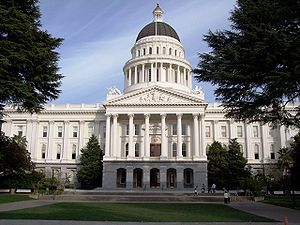A question asked of many bankruptcy attorneys in Sacramento by business owners is that of which chapter of bankruptcy is preferable for their particular financial situation.
Chapter 7 is typically used by companies that are so far in debt that even a reorganization could not assist in recovery—or someone who has stopped caring about a possible recovery, while Chapter 11 is used by companies who feel like they could become profitable again someday with a court-structured reorganization. Note: Chapter 11 can also be used by individuals, but we’ll cover that in another blog post. Chapter 7 is considered to be a total liquidation bankruptcy. All un-exempt assets must be sold off to pay creditors. Creditors may only collect in the order of priority—meaning “first come, first serve”, or “absolute priority”. A court appointed trustee will ensure that all assets are sold and that creditors are paid in the order of absolute priority. I’ve found as a practicing Sacramento bankruptcy lawyer that even the threat of Chapter 7 is enough to make many creditors more amiable and reasonable with debt negotiations as it is quite possibly that they could get absolutely nothing out of Chapter 7 liquidation. Chapter 11 is used by companies who believe that a reorganization of debts and company restructuring could return their entity to a profitable operating enterprise. This form of bankruptcy is often referred to as “rehabilitation bankruptcy”. It is clearly a more onerous and lengthy process than Chapter 7. In this case there is no liquidation of assets, just a restructuring of debt under the aegis of the courts. The trustee in this case supervises the process and redistributes the debtor’s assets under the guidance of the court. The business will continue on before in accordance with the plan submitted and creditors will be repaid from future earnings of the company. This form of bankruptcy is also used even when a business is not entirely underwater as a form of asset protection of business owners as it “freezes” any debt collection or potential legal disputes until after the case is out of Chapter 11. Your Sacramento bankruptcy lawyer can explain in more detail, but that is pretty much a general overview of the two forms of bankruptcy that businesses can use when they are overloaded by debt. I personally look at my clients financial records and weigh their desires against the facts prior to making any recommendation. As I stated earlier there are some clients of mine who could justify a Chapter 11 but just are too overtaxed to want to keep the business going and choose the route of Chapter 7 bankruptcy liquidation. It takes a lot to keep a business afloat in these times, and speculations about what a business could do in the midst of economic financial uncertainty certainly makes the decisions a business owner must make that much harder. So if you are considering bankruptcy as a means of debt relief come and talk to me. I promise to work with you to better understand “why” you wish to file and help you choose the right approach for your situation—financial and emotional.


